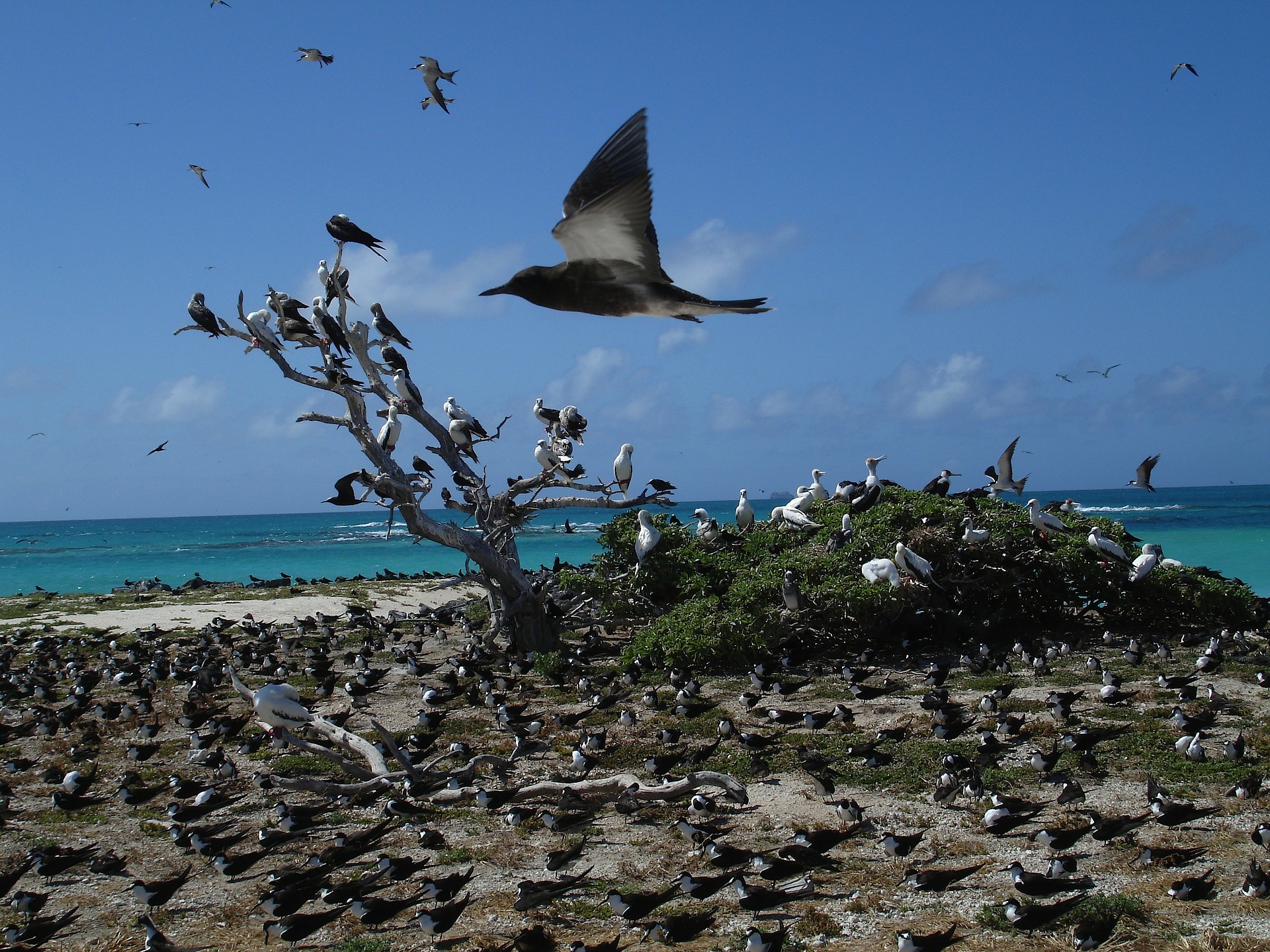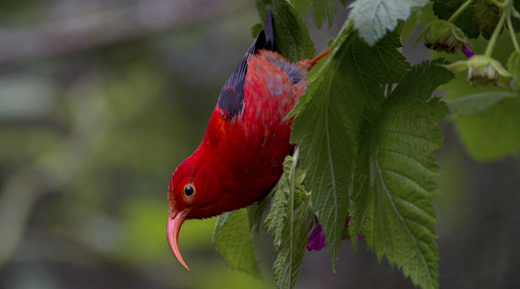Hawaii is home to a wide variety of native bird species. Many of them are on the Endangered Species List and some are “critically endangered”. Efforts are ongoing to protect these species, with limited success, across the state. Enthusiasts of birding in Hawaii, or simply “birdwatching”, have benefitted from conservation policies.
Hawaii’s endangered forest birds have retreated “above the mosquito line” into higher altitude, remote forests in areas too cold for mosquitos to survive. Mosquitos spread the avian flu to Hawaii’s native birds and has, sadly, devastated existing species and causing the extinctions of others. Bird watchers in Hawaii who hope to spot these species will need to get into Hawaii’s remote, protected forests (safely and legally, please!).

According to the Audubon Society, there are six such nature reserves on four islands in Hawaii identified as “Hawaii Birding Hotspots”. There are excellent sites on Oahu, Maui, Kauai, and Hawaii Island. The nene goose, the official State Bird of Hawaii, is common at Hawaii Volcanoes National Park on Hawaii Island. The protected species has made a comeback due to decades of protected status. It can be found on Maui and Kauai, too. A nesting family of nene was recently observed on Oahu’s North Shore.
Hawaii’s protected forests are also home to the predatory native species ‘Io (Hawaiian Hawk) and the Pueo (native owl). They are rare to see, but birding in Hawaii requires a keen eye. Hawaii’s endangered forest bird species are rare, not the kind that befoul your car when you park under the wrong tree.

Hawaii’s coastlines are home to a wide variety of native and migratory species, including the Laysan Albatross, Hawaiian Petrel, and Blue and Red Footed Boobies. The Kilauea Point National Wildlife Refuge on Kauai’s northern tip is ideal for spotting the seafaring birds of the Hawaiian Island (and, maybe, an occasional Hawaiian monk seal).
Birding in Hawaii involves more than simply “birdwatching”. Hawaii’s forest birds like the ‘elepaio and i’iwi (its feathers were once used to fashion the cloaks of Hawaii’s ruling chiefs) are tiny creatures. As devoted birders know, being able to identify the unique song of a given species greatly increases your chances of an encounter with elusive endangered species. Call it “bird-listening”. To serious “birders”, hearing the call of a rare species in the wild can be every bit as thrilling as laying eyes on it.

Hawaii’s Department of Land and Natural Resources is an excellent source of information about Hawaii’s native bird species. With detailed pictures and recording of birdsong available free to the public, the DNLR makes it easy for visiting “birders” to prepare for birding in Hawaii.
There are some basic but important tips for birding in Hawaii. First among them is to stick to official, marked trails. Stay well away from restricted areas within Hawaii’s protected nature reserves. That’s what “protected nature reserve” means!

Obviously, its important to stay hydrated and to plan your excursion so that it ends before the sun sets. It’s easy to get lost or in danger in Hawaii’s protected forests. Just ask any of the dozens of hikers plucked from Hawaii’s remote areas every year. Others are not so fortunate as to be rescued.
Hawaii’s natural spaces are full of opportunities for birding in Hawaii. As always, we advise visitors to take nothing but pictures from those places and leave nothing but footprints.
Pack those binoculars, birders! We here at Hawaii Aloha Travel can help get you started.




